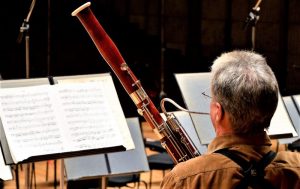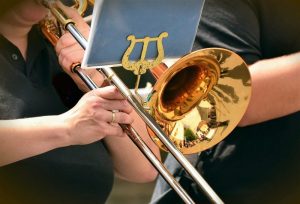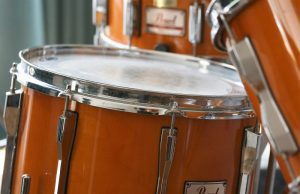Transverse flute
The transverse flute, also known as the transverse flute, is a musical instrument that, despite being made of metal, belongs to the family of woodwind instruments because the first flutes that were built were all made of wood. However, with the appearance of the first machines and the development of technology, metal was the main source of construction. In order to make the flute sound and produce different types of notes, the metal keys must be pressed using the fingers. The transverse flutes generally inside the orchestra are usually placed next to the oboes and in front of the clarinets. There are also different sizes, but the most commonly used flutes are known as the flute and the transverse flute (in C).
What is the transverse flute?
The transverse flute is a musical instrument that belongs to the group of wind instruments, so it belongs to the group of aerophones. It is also considered part of the wooden instruments, although nowadays, different materials are used for its construction.
Characteristics of the transverse flute
The main characteristics that make the transverse flute an exceptional musical instrument are the following:
- It has a bevel-shaped
- The transverse flute consists of a tube measuring 67 centimeters in length and 19 millimeters in diameter.
- This instrument is divided into three parts: head, body and foot.
- The keys and levers that it possesses facilitate the use of the hands and the emission of the sound.
- It has a total of 13 different holes and each of them has a key. Each hole is made for each finger of the hands with the exception of the thumb of the right hand.
- Its upper end of the first tube is closed, in the middle of which is the mouth, with an oval hole larger than the others.
- They are generally made of sterling silver, although it is also possible to find them in materials such as nickel, gold, silver, titanium and platinum.
- Some orchestras and soloists also use wooden transverse flutes.
- In recent years, metal flutes have begun to be made because it helps the sound produced by the flute to be of better quality, brighter and more powerful.
- Some people also spend impressive amounts of money building gold and ivory
- The register of the transverse flute is three octaves starting from do4 to do7.
History
The transverse flute had its origins in medieval times. The first antecedent recorded in history was that of an elongated tube that had different holes, through which it was blown to obtain a note, and the holes were covered or uncovered with the fingers of the hand.
In nineteenth century, this instrument won a more elaborate design by Theobald Böhm, who was a Bavarian musician and composer of the time. He made several changes including a set of keys for each hole, additional openings and a lighter look that made it possible to manipulate the flute between the fingers with greater simplicity.
During the Middle Ages the flute did not have a great significance, however, during the Baroque era greater importance was given to its evolution. After 1700, the presence of flutes began to be noticed in compositions and operas, and many musicians used it in different works.
During the classical period, its first modifications were made. Siccama, Carta, Radcliff and Pratton, added two more keys than he owned. Certainly there were relevant changes for the instrument, in the years following the 1800s.
Who invented it
The inventor of the transverse flute is considered to be Theobald Boehm, who was born in Munich in the Bavarian region in 1794 and died in 1881. He was a court musician, a respected composer and a virtuoso flutist.
Types
There are several types of transverse flute, among them are:
- Piccolo Flute (do5)
- Sopranino flute (sol4)
- Soprano flute (re4)
- Transverse flute (do4)
- Tenor flute (si♭3 or la)
- High Flute (sol3)
- Bass flute (do3)
- High flute (sol2)
- Double bass flute (do2)
- Sub-work flute (sol1)
- Double bass flute (do1)
- Double bass flute (do1)
What is the transverse flute for?
The transverse flute is an instrument that is used in the interpretation of Chamber Music and in the Orchestra’ repertoire, however, with time, it has also been incorporated into different musical styles such as Jazz, Tango, Celtic music, flamenco, rock and pop among others.
How is it played?
The transverse flute should be placed in a horizontal position while playing. The lips are placed in an embouchure and then, an air current is blown over the mouthpiece to produce the sound. The lower lip should cover part of the opening and the mouthpiece move slowly back and forth until you hear a clear, firm tone.
The flute should be taken with the left hand so that, the left palm is oriented toward the person playing the instrument. This hand will play the keys closest to the mouthpiece. The right hand is placed on the keys closest to the open end of the flute so that, the palm faces outward.
The fingers of each hand should be placed in the correct positions. Near the end of your left hand there should be a teardrop-shaped key where the left pinky is placed. The two keys below are touched with the middle finger and the ring finger. Jump the next key to the middle finger and place your index finger over the next key. The thumb of the left hand plays the B-flat key at the bottom of the flute.
Featured interpreters
Throughout history there have been many musicians who have played this instrument, some of the most prominent are:
- Merchant Saverio
- Carl Maria Von Weber.
- Peter Joseph von Lindpaintner.
- Friedich Kuhlau.
- Carl Reinecke.
- Wilhem Popp.
How to cite this article?
Briceño V., Gabriela. (2019). Transverse flute. Recovered on 3 January, 2025, de Euston96: https://www.euston96.com/en/traverse-flute/










